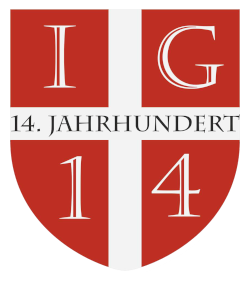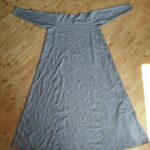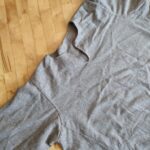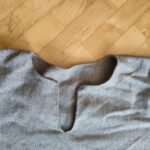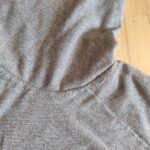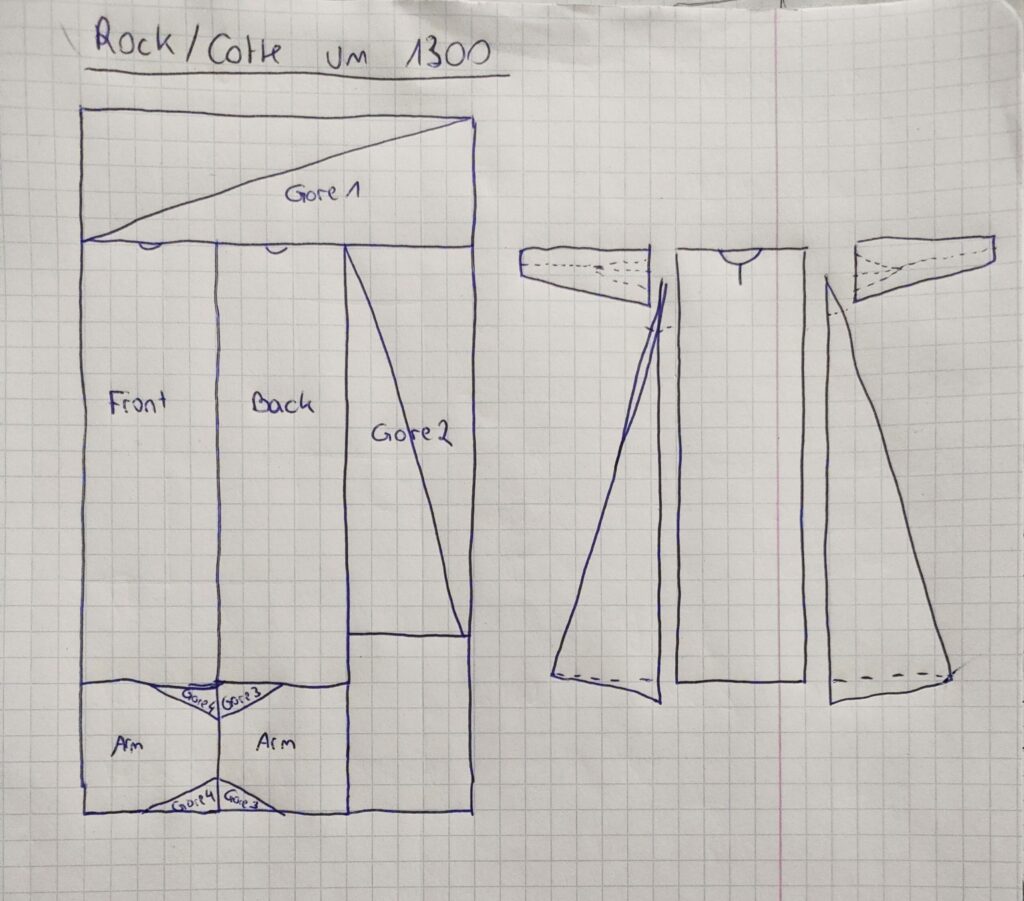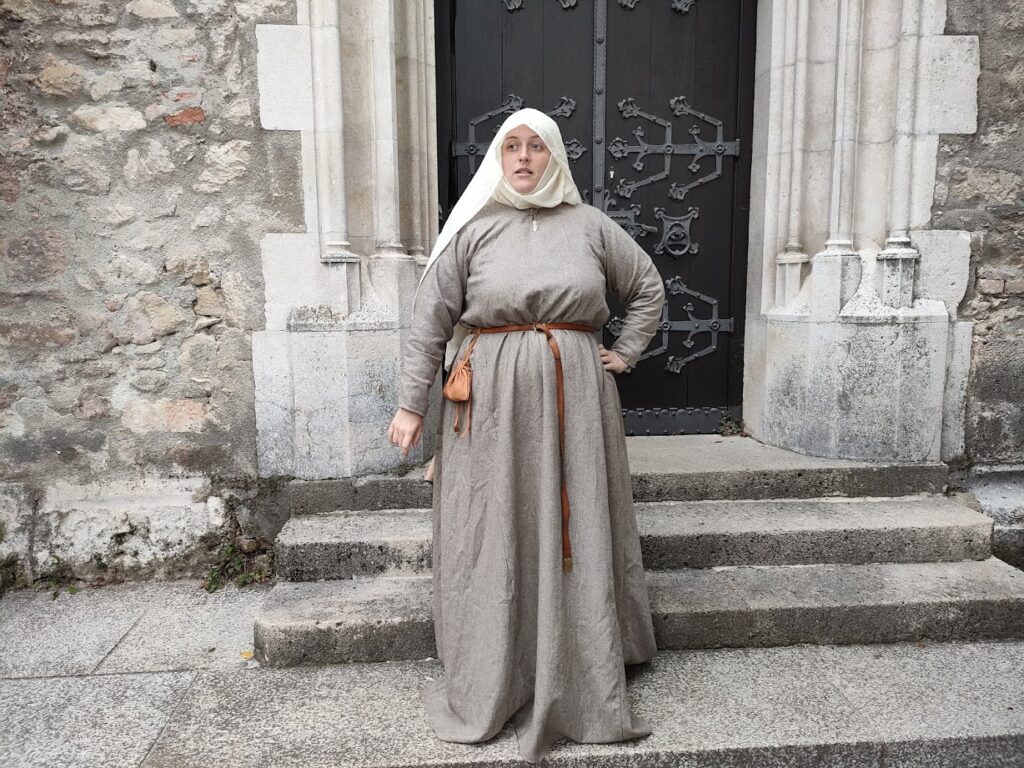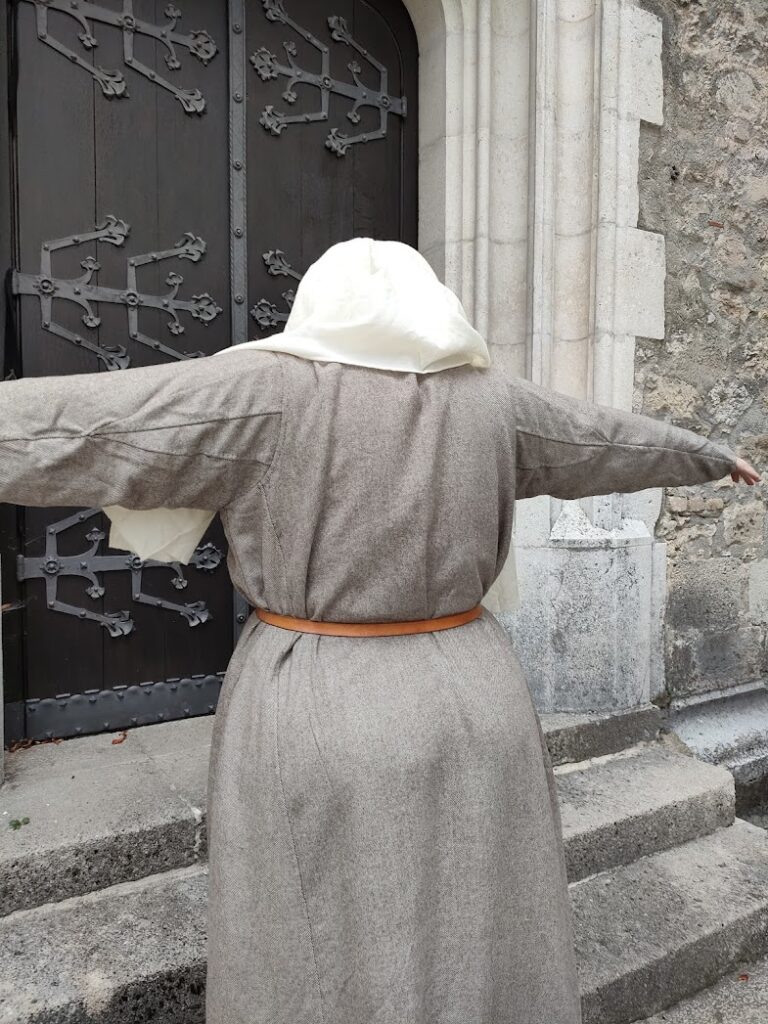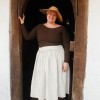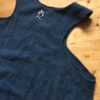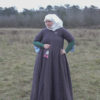Visiting Grandma – A simplewoman’s dress around 1300
Usually on this blog, you are moving between the late 1340s and the early 1350s, but today, we are making a little trip to the very early 14th century.
I always pays to have costumes outside of one’s main frame of impression, to be able to visit some other events and get to meet other people. This year, I was invited to support a high medieval riding event with a time frame of the 13th and 12th century AD and of course I was happy to accept the invitation, which was a well worth decision. To fit to the rest of the interpreters, I had to have a adress that was very different from what I had in my stack, so to the needles I went!
I wanted to have a dress that fits the very end of the 13th and the beginning of the 14th century.
The sources are pretty clearly showing easy fitting, wide gowns, tied with a belt in the waist, with fitting underarms (I didn’t want mine to be too tight, so I could still shove them up my arm when working), either with no closure or a keyhole opening, either left open or closed with a brooch.
https://digi.ub.uni-heidelberg.de/diglit/cpg164/0015/
http://www.e-codices.unifr.ch/en/list/one/fmb/cb-0075
http://www.e-codices.unifr.ch/de/list/one/vad/0302
https://realonline.imareal.sbg.ac.at/detail/nr-003394E/
https://realonline.imareal.sbg.ac.at/detail/nr-007862/
https://realonline.imareal.sbg.ac.at/detail/nr-007863/
Theoretically, a model like this could be in use between 1250 and 1350 (in the later decades obviously only for very simple, conservative impressions). Going further into the 14th century, I would at least have to change the neck closure method urgently to use it as say a poor maid, an old granny or a nun in the 14th century. It could also work as an overdress when closed with buttons at the neck.
I made the dress from simple natural brown wool twill (2/2 twill) and sewed it with natural brown wool thread. I used a lap seam (while I usually would use a butterfly seam) to safe time. You could also use an Elisabeth seam when making this model for the late 13th century.
The construction uses one front and one back panel, 4 gores at the sides. Very simple. I made light arm scyes with the arm seams at the back and used arm gores which resulted from cutting off the underarm fabric from my (originally rectangle) arm pieces. See my sketch below for more information.
As always, I made a sketch of how I cut the dress from the fabric, because I really think, this is the easiest to understand, using most of the fabric and simplest to measure way to cut 13th and 14th century dresses. How you set in the arms, I showed in a sketch in a little more detail here .
And this is, whata the dress looks like worn.
Related Posts
The following posts might interest you as well:

